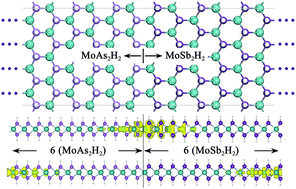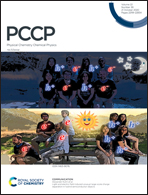Toward lateral heterostructures with two-dimensional MoX2H2 (X = As, Sb)
Abstract
The development of two-dimensional (2D) lateral heterostructures (LHs) with the powerful tunability of electronic properties will be of great realistic significance for next-generation device applications. Herein, we report the novel 2D MoX2 and MoX2H2 (X = As or Sb) monolayer materials with excellent stability. Using first-principles calculations, we demonstrated that 2D MoX2 layers possess the metallic characteristic while the full surface hydrogenation effect would play a role in stabilizing the 2D lattices and lead to band gap openings of 0.83 and 0.50 eV for the 2D MoAs2H2 and MoSb2H2, respectively. In addition, our results suggest that the 2D MoAs2H2 and MoSb2H2 can serve as the ‘building blocks’ to construct the seamless LHs exhibiting excellent thermal and dynamical stability. The obtained nL-MoAsSb LHs enable the fully tunable band gap engineering behavior with linear tendency as a function of the width of the in-plane components. The phase transition from direct to in-direct band gap was also confirmed in the LHs as the crucial value of n = 3. In view of the type-II band alignment and efficient carrier separation in nL-MoAsSb, the predicted MoX2H2 and nL-MoAsSb LHs not only highlight the promising candidates for 2D pristine materials, but also paves the way for the realization of practical integrating device applications.



 Please wait while we load your content...
Please wait while we load your content...